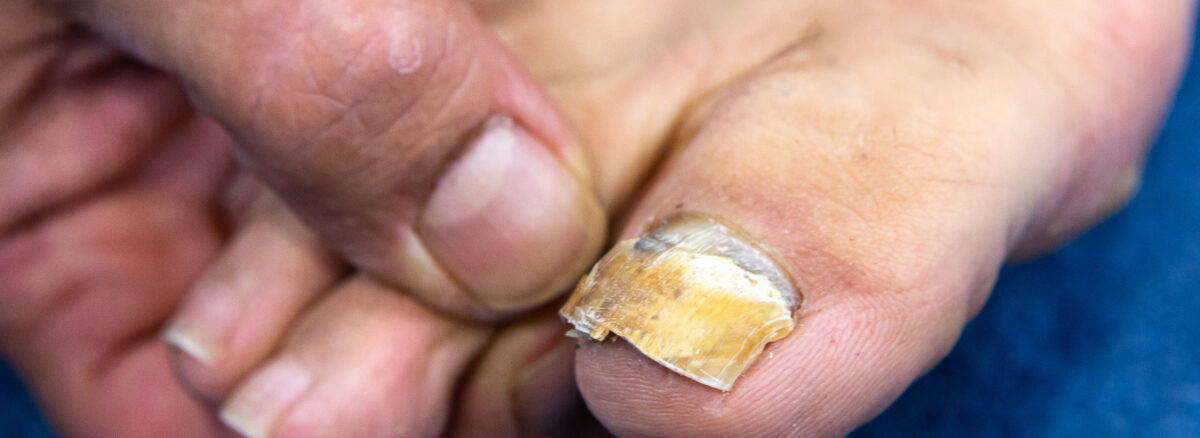Fungal Nail Infections
Fungal nail infections, medically known as onychomycosis, are common conditions that begin as a white or yellow spot under the tip of your fingernail or toenail. As the fungal infection goes deeper, it can cause your nail to discolor, thicken, and develop crumbling edges — an unsightly and potentially painful problem.
Causes of Fungal Nail Infections
These infections are caused by various fungal organisms (fungi), with the most common being dermatophyte. Yeast and molds also can lead to nail infections. Fungal nail infections are more common in toenails than fingernails.
Risk Factors
Several factors can increase the risk of developing a fungal nail infection, including:
- Age: Reduced blood circulation and slower growing nails as you age.
- Sweating heavily.
- History of athlete’s foot.
- Walking barefoot in damp communal areas, such as swimming pools, gyms, and shower rooms.
- Minor skin or nail injury, a damaged nail, or other infection.
- Diabetes, circulation problems, a weakened immune system, or slow nail growth.
Symptoms
Symptoms of a fungal nail infection include:
- Nail discoloration: Nails may turn white, yellow, green, or black.
- Thickening of nails.
- Misshapen nails: Nails may warp or change shape.
- Brittle, crumbly, or ragged nails.
- Slightly foul smell.
- Pain or discomfort, especially when using or putting pressure on the affected toes or fingers.
Diagnosis
Diagnosis of a fungal nail infection is often made by examining the nail and the debris under it. Your healthcare provider may also take a nail clipping to look under a microscope or send it to a lab to identify the type of fungus causing the infection.
Treatment Options
Treatment for fungal nail infections includes:
- Oral antifungal drugs: These help a new nail grow free of infection, slowly replacing the infected part.
- Medicated nail polish: Antifungal nail polish called ciclopirox.
- Medicated nail cream: Applied to the infected nail after soaking.
- Nail removal: If the infection is severe or extremely painful, the nail may be removed.
- Laser and light-based therapies: Some studies show promising results but are not yet a standard treatment.
Preventive Measures
To reduce your risk of developing fungal nail infections:
- Keep your nails trimmed, dry, and clean.
- Wear sweat-absorbing socks or change them throughout the day.
- Choose shoes made of materials that breathe.
- Discard old shoes or treat them with disinfectants or antifungal powders.
- Wear footwear in pool areas and locker rooms.
- Choose a nail salon that uses sterilized manicure tools for each customer.
- Give up nail polish and artificial nails.
While fungal nail infections can be stubborn to treat, medications available can effectively clear up the fungus. In some cases, treatment doesn’t completely destroy the fungus, and it may be a persistent problem. If you suspect you have a fungal nail infection, consult your healthcare provider to discuss treatment options. With proper medical attention and preventive practices, you can regain the health of your nails.


